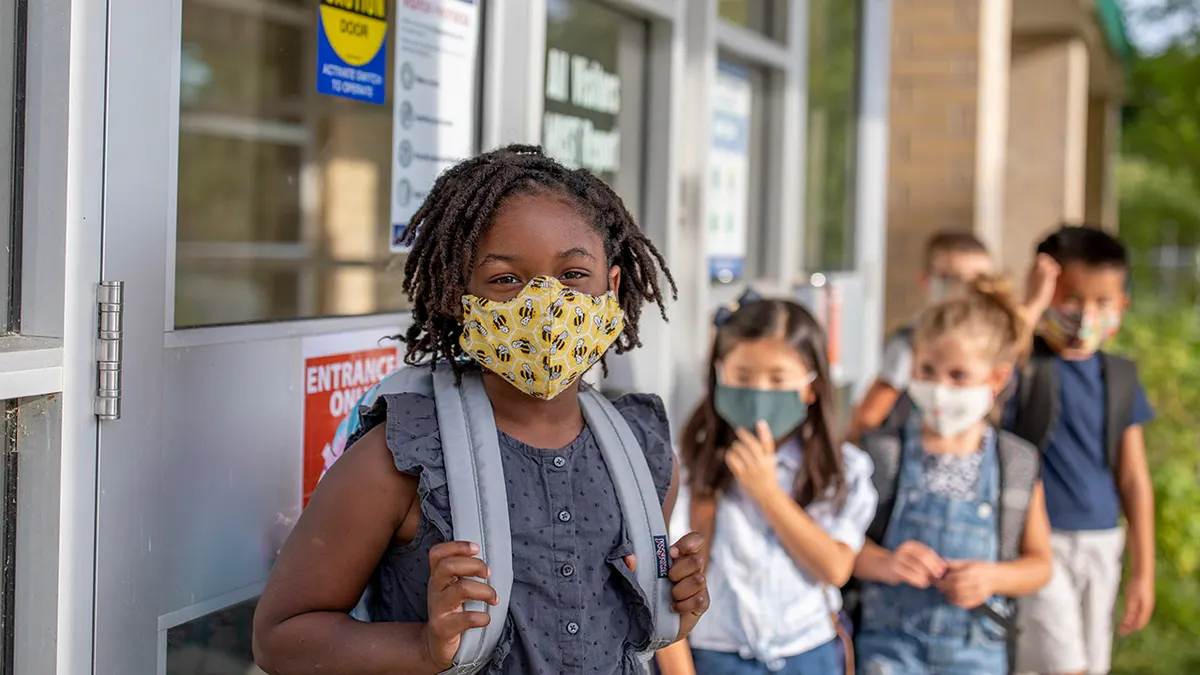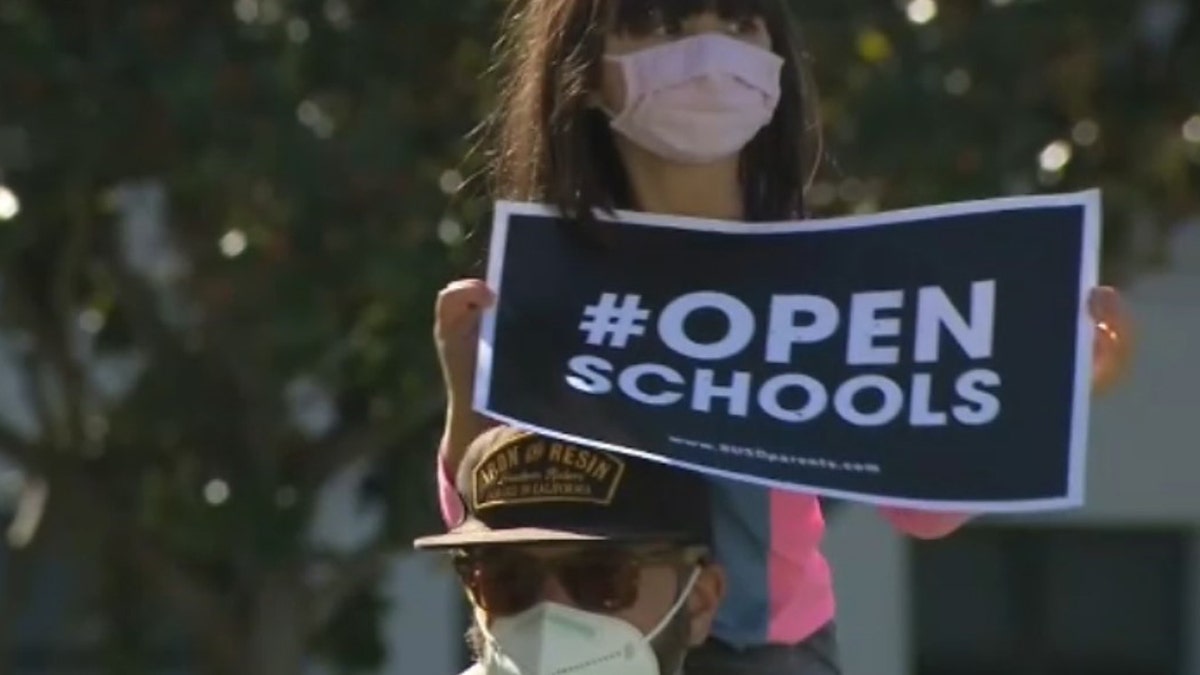National Opportunity Project President Pat Hughes discusses the organization's new report
The report by the National Opportunity Project found that more than $700 million in K-12 emergency funding as a result of COVID-19 did not reach the students it was intended for and has instead been used as a slush fund in many states
EXCLUSIVE: More than $700 million of K-12 funding did not reach the students it was intended for, and in many states, it is being used as a slush fund for other priorities, according to a study conducted by the National Opportunity Project (NOP), which conducts public policy and issue advocacy work on behalf of liberty-based principles.
As of March 2023, three years after the start of the pandemic, $736 million of federal aid has not reached the nonpublic schools and students it was set aside for and at least $157 million that states didn’t allocate to nonpublic schools has ended up back in the hands of governors who reallocated the money to "pet projects," according to the NOP report.
In 2020, Congress allocated almost $200 billion in government relief to aid in the reopening of K-12 schools amid the COVID-19 pandemic, of which about 97% went to government-run public schools, according to the report. But, after a push from stakeholders detailing the harm from government-mandated closures on private schools, Congress created the Emergency Assistance to Nonpublic Schools (EANS), which allocated an additional $5.5 billion in aid for private, independent and parochial schools with low-income students who were severely impacted by the pandemic.
NOP President Pat Hughes, told Fox News Digital that most people think private school kids are privileged or affluent, which is sometimes the case, but many students in these schools are from minority or low-income backgrounds who desperately need education assistance as a result of government policy during the pandemic.
The NOP report points to problems with the EANS program, including poor federal oversight, arbitrary implementation and overly restrictive requirements that kept EANS qualified schools from accessing funds designated for them.
Some of the program requirements were more restrictive when compared to the federal relief funds for public schools, which the NOP described as "blank checks," while funding for nonpublic schools was limited and focused on sanitation supplies, temporary air ventilation systems and leasing space to ensure students and teachers were social distancing.

COVID relief money given to non-public schools was often mis-spent, a NOP study revealed. (iStock)
"This money, the $5.5 billion, was supposed to be designed to help people get through that pandemic and the problem was the public schools had a broad base of what they could use the money for, but the private schools were limited in what they could use it for," specifically "things that were directly related to the disease as opposed to things that were directly related to their educational wellbeing."
Governors and state leaders were not incentivized to allocate all the funding to nonpublic schools because of the so-called "reversion clause" that allows money that doesn’t reach schools within six months to be used by the state's governor for virtually any educational purposes, the NOP report found.
"Sometimes it is misused, sometimes it just reverts back to the governors and they use it for a pet project that may be a good project … but it isn't going to help educate kids who had tremendous learning loss and mental distress in these private schools," Hughes said.
Because of the programs limits, Hughes said the money is often allocated away from the kids, schools and the things they really need, which he said is the fundamental problem with the way that the law was designed, where governors get the money back if it isn't placed.
"We did this report to do an analysis of all the money that was out there and available, and then to start the process of letting the public know," he said. "There are many states where the money can be redirected by the governors and we think that the governors should be giving that money to the schools for education, specifically because of how much learning loss and mental stress [that] took place because of the COVID policies after all these years."
The NOP report also pointed to many arbitrary parameters of the program that resulted in an inconsistent distribution of funds because they left it up to states to decide how to notify schools about the funds, calculate the impact of COVID-19 on nonpublic schools and how to measure low-income student enrollment to qualify for EANS.

(CBSN)
NOP pointed to several examples of the funds not being used for their indended purpose, including $500,000 in West Virginia for awards to 12 public schools that won a statewide "I Got Vaxxed!" competition, $1.6 million for Oregon's "Moonshot for Equity" initiative aimed at "eliminating equity barriers," $1.2 million in Alaska being used to teach students how to code using the video game Minecraft, $25 million in South Carolina for a community college program and $7.7 million for mental health programs at public colleges and universities in North Carolina.
"There's money set aside for educating people in community colleges," Hughes said. "No, I'm not opposed to that, but that's not what the money was intended for. It's intended to help children who need to read, children who do math. That's what the money was for and that's what it should still be used for."
Other states like Tennessee and Texas have $101 million and $115 million in unspent money respectively.
The NOP believes elected officials at the state level should honor the promise made to address COVID-19 related learning loss in nonpublic schools, which includes removing misguided criteria that prevented some schools from being eligible.
PANDEMIC LEARNING LOSS COULD COST STUDENTS THOUSANDS IN INCOME OVER THEIR LIFETIME: STUDY
Hughes described the unused funds as an "incredible opportunity" for governors to use the money at their discretion, which he argued shouldn't have been the case in the first place if the law had been drafted and implemented correctly.
"I don't want to paint too broad a brush and say that the governors across the country are doing nefarious things, whether they're Republican or Democrat," he said. "I think that the issue is more [that] there's an opportunity here and that opportunity is $736 million, kids who have lost learning during the pandemic, who could use that money and the governors can come up with a way to use that money that can then benefit them."
Hughes stressed that groups like NOP are critical in the fight to keep government accountable and to make sure that American tax dollars are used correctly. While COVID was a terrible illness, the policies that were implemented didn't line up with the risk it posed to children, he added.
"The policies of keeping children out of school, learning loss, Zoom teaching and all that, those in the rearview mirror are looking increasingly disastrous as we go forward," he said.
He believes the American people need to put pressure on governors and state lawmakers to make sure that federal money gets where it needs to go to educate U.S. kids for the benefit of the country.
CLICK HERE TO GET THE FOX NEWS APP
"We have to be sure that when government gets sort of wide swaths of power, which during COVID it did, at the state level with emergency powers, at the federal level, that the individual citizen keeps an eye on that and is activated and wants to help," he said.

